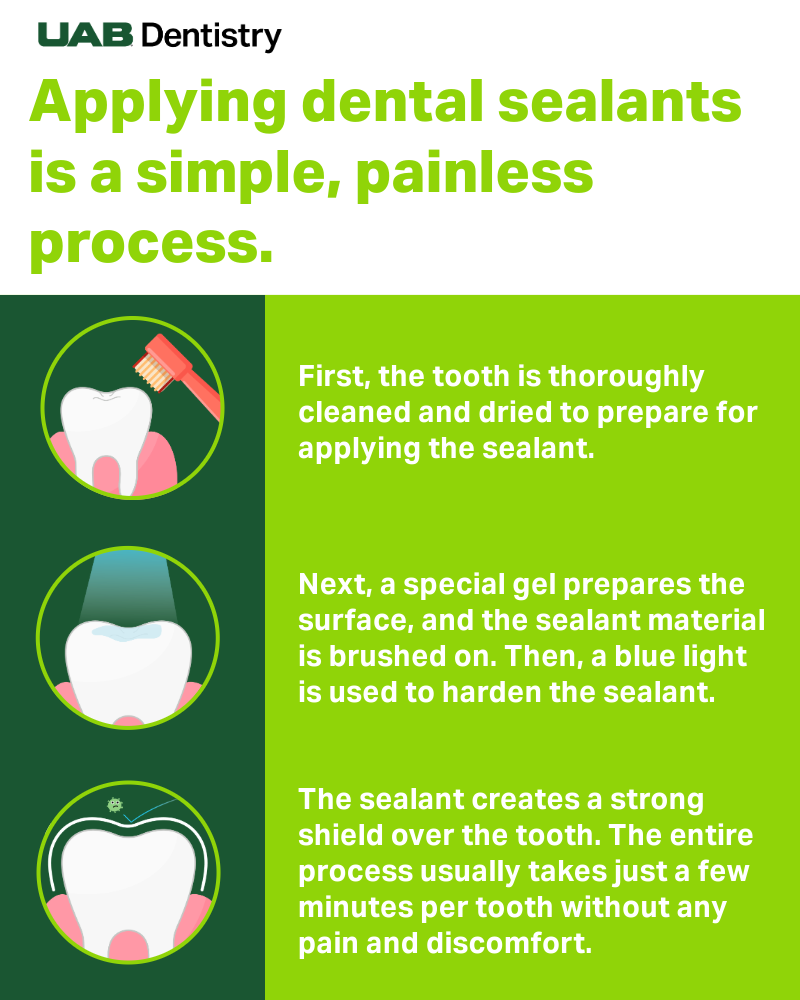Cavities are one of the most common dental problems in children, but a simple, painless treatment called a dental sealant can offer lasting protection.
 Dr. Kyounga Cheon, associate professor and director of the Finn Pediatric Dentistry Clinic at the UAB School of Dentistry.Sealants are thin, protective coatings placed on the chewing surfaces of the back teeth (molars and premolars), where cavities are most likely to develop. By acting as a barrier, sealants help keep food particles and bacteria out of these vulnerable areas, preventing decay on the chewing surfaces of teeth.
Dr. Kyounga Cheon, associate professor and director of the Finn Pediatric Dentistry Clinic at the UAB School of Dentistry.Sealants are thin, protective coatings placed on the chewing surfaces of the back teeth (molars and premolars), where cavities are most likely to develop. By acting as a barrier, sealants help keep food particles and bacteria out of these vulnerable areas, preventing decay on the chewing surfaces of teeth.
“Dental sealants are an effective way to protect children's teeth during the years they are most vulnerable to decay,” said Kyounga Cecilia Cheon, D.M.D., M.S., associate professor and director of the Finn Pediatric Dentistry Clinic at the University of Alabama at Birmingham School of Dentistry. “This is a quick and easy preventive measure that can save families time, money, and discomfort in the long run.”
Typically, sealants are recommended for children shortly after their first permanent molars come in — around age 6 — and again when their second molars erupt around age 12. Ideally, sealants are applied once the molars have fully erupted to ensure optimal coverage and retention. Teenagers and even some adults at higher risk of cavities can also benefit from sealants.
 Applying sealants is a simple, painless process. After the tooth is cleaned and dried, a special gel prepares the surface, and the sealant material is brushed on. Then, a blue light is used to harden the sealant to create a strong shield over the tooth. The entire process usually takes just a few minutes per tooth without any pain and discomfort.
Applying sealants is a simple, painless process. After the tooth is cleaned and dried, a special gel prepares the surface, and the sealant material is brushed on. Then, a blue light is used to harden the sealant to create a strong shield over the tooth. The entire process usually takes just a few minutes per tooth without any pain and discomfort.
Sealants can protect teeth for several years before needing reapplication and they have been shown to reduce the risk of decay in molars by nearly 80%. With proper care they can last up to 9 years, although periodic monitoring and occasional repair or reapplication are recommended.
“Regular dental visits are key not only for monitoring sealants but for maintaining overall oral health,” Cheon said. “They allow us to catch small problems early before they become bigger issues, and they help reinforce good hygiene habits that protect children's teeth for life."
Many dental insurance plans cover the cost of sealants for children and teenagers. Also, some community health programs provide them at little or no cost through school-based initiatives.
Parents are encouraged to talk to their child’s dentist about the benefits of sealants— and to establish a "dental home" where preventive care and good oral health habits are nurtured throughout childhood and beyond.